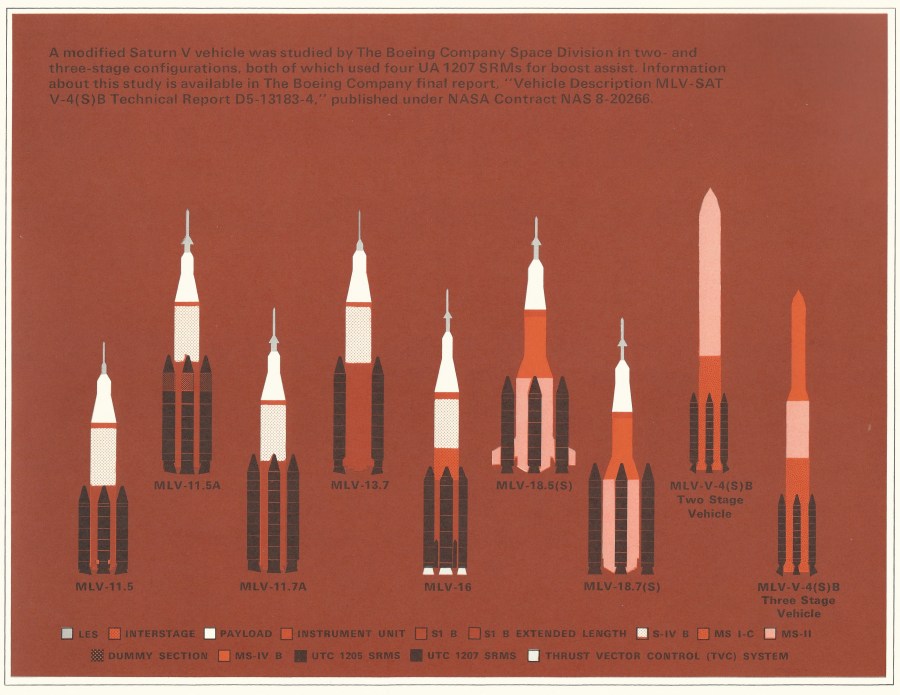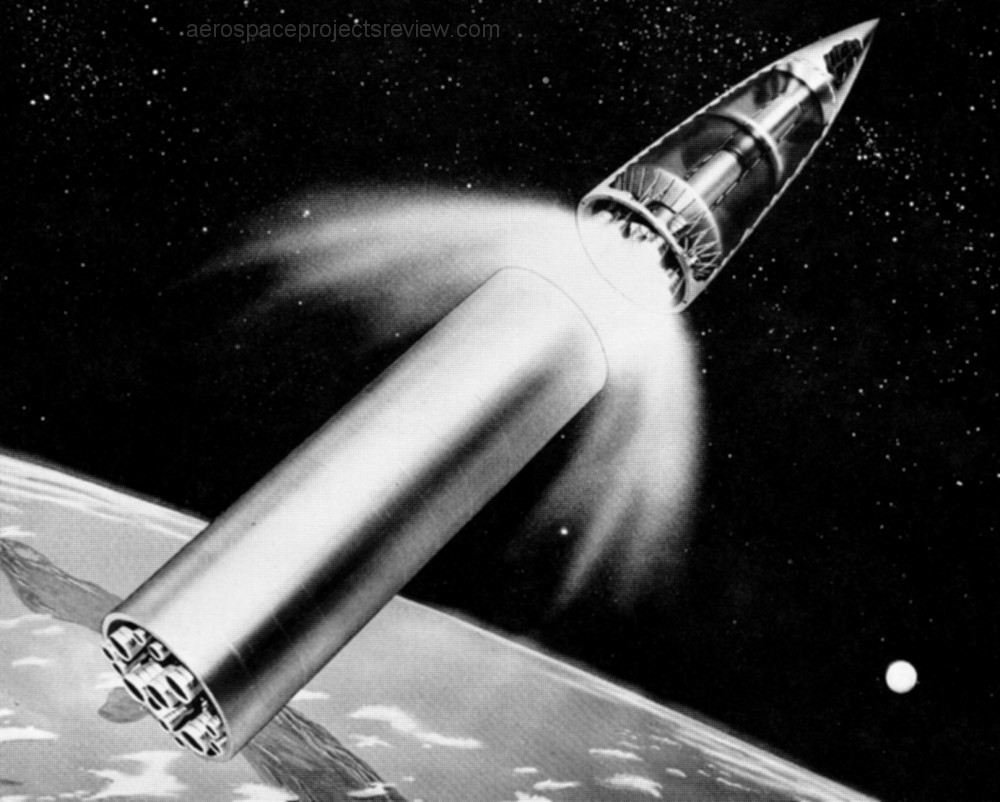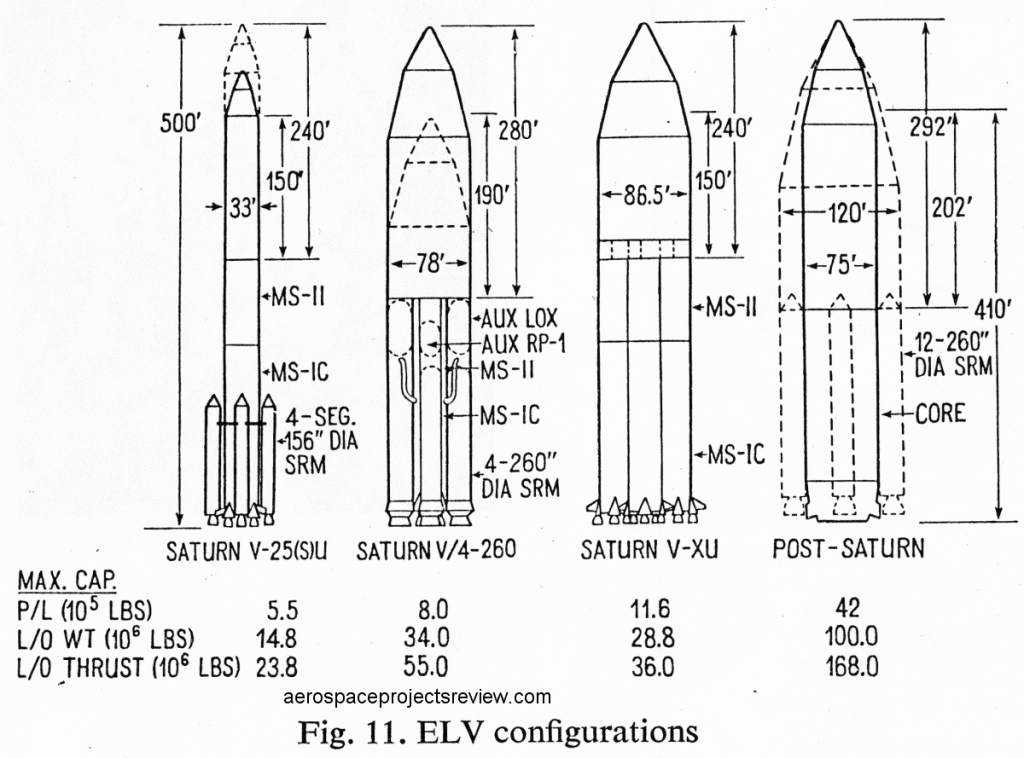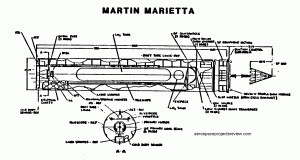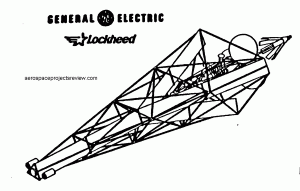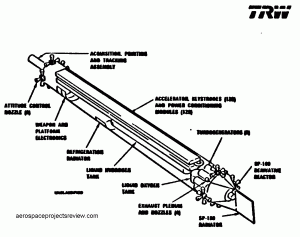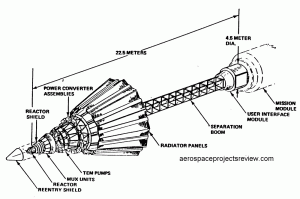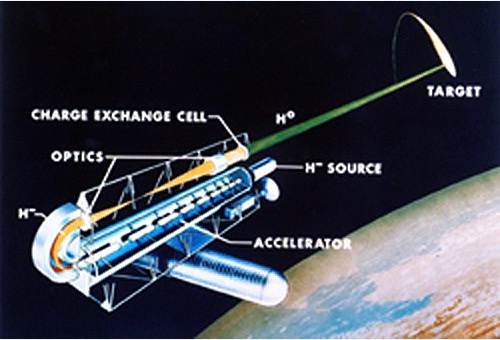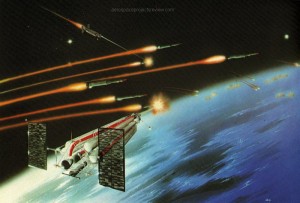A Saturn Ib with four UA-1205 solid rocket boosters with thrust vector control.
Artwork of a three-stage rocket designed by Krafft Ehricke around 1953. 126 feet tall, it would be capable of orbiting 11,000 pounds of payload into a 600 mile circular orbit. Liftoff weight would be 1.3 million pounds.
The first stage, here being shown dropped, would be parachute recovered. the second stage would be expended; the third stage would be used to built up a space station. If you can’t immediately tell where stage 2 ends and stage 3 begins, it’s because stage 3 is the central cylinder, with stage 2 being wrapped around it. This sort of staging arrangement was considered fairly often in the days before they actually had to build these things.
It would be able to land 3,000 pounds on the moon or shoot 5,000 pound probes past Mars or Venus.
In 1968, Boeing (manufacturer of the S-IC stage of the Saturn V) put out an illustration of advanced derivatives of the Saturn V. Published in the XIXth International Astronautical Congress, these included the Saturn V-25(S)U, which was a stretched Saturn V with improved F-1 and J-2 engines, with four 156″ diameter solid rocket boosters; the Saturn V/4-260, which used the same improved Saturn V, but with four 260″ diameter solid rocket boosters, with additional first stage liquid propellant in tankage ahead of the solid boosters. Additionally, the payload shroud could be increased in diameter from ten meters to 78 feet,and up to 290 feet in length. Further included was the Saturn V-XU, which was four improved Saturn V’s clustered together (both first and second stages), with a payload shroud 86.5 feet in diameter and 240 feet long; and an all-new Post-Saturn concept with a 75-foot-diameter core vehicle with optional 260″ diameter solid rocket boosters (up to twelve) and a payload shroud up to 120 feet in diameter. A payload of up to 4.2 million pounds was envisioned.
Two length options were shown… 410 feet and 500 feet. The 410 foot-long vehicles could be assembled within the VAB; the 500 foot-long vehicles would require that the payload be stacked onto the vehicle outside the VAB using a new crane mounted to the VAB roof.
Very little has emerged from the Strategic Defense Initiative days revealing *actual* weapons designs. With the exception of some of the Brilliant Pebbles and Zenith Star designs, almost nothing apart from unreliable artwork has been released. On occasion, though, bits have come out. Three neutral particle beam satellite weapon concepts were shown, in low-rez and frustrating detail, in a report on power systems for SDI use.
The Martin-Marietta NPB concept:
The Ge/Lockheed NPB concept:
The TRW concept:
The drawings are too small to glean details such as full-scale dimensions, or even get a really good handle on layouts. The GE/Lockheed design seems to come equipped with large panels, presumably radiators, held within a triangular cross-section framework. The Martin and TRW concepts appear to be roughly cylindrical. And unlike the majority of the artwork produced for public consumption, here you can make out the nuclear reactors meant to power the systems.
While dimensions are either unavailable or illegible in these illustrations, two show the SP-100 reactor and associated radiator system. The radiators change from illustration to illustration of the SP-100, so cannot be firmly relied upon as a scale reference, and the Sp-100 reactor itself is little more than a dot, but this illustration of the SP-100 should help to give a rough idea how big it, and by extension the NPB concepts, were going to be.
Another space-based anti-missile system contemplated for the Strategic Defense Initiative was the neutral particle beam. Specifics are exceedingly thin as befits a concept that sounds a *lot* like science fiction.
In practice, the system is a particle accelerator that ionizes hydrogen atoms, grabs them with massively powerful magnetic fields and accelerates them to near light speed. At the end o the weapon, extra electrons are stripped from the atoms, making the hydrogen atoms electrically neutral. This makes them largely impervious to natural and artificial magnetic fields, so they go where you aim ’em and can’t be readily shielded against. However, atmosphere rapidly scatters the beam, so space basing is really the only option. Unlike a laser beam, a mirrored surface would not faze a neutral particle beam. In fact, much of the damage would be done *within* the target, as the hydrogen atoms would penetrate some distance before being stopped and depositing their kinetic energy as heat.
Most of the artist impressions of NPB weapons that I recall showed U-shaped accelerators. By folding the accelerator in half, the spacecraft would be more compact. The energy requirements meant that nuclear powerplants were needed, but the power requirements – billions of Watts for a tiny fraction of a second – would make the power storage and supply issue entertaining. If that issue is cleared up, firing rates of perhaps thousands of shots per second would be possible.
Heres a terrible-quality image of unknown origin, but shows the basic idea:
Another illustration, credited to Los Alamos National Lab. Note that what at first glance appears to be solar panels is actually transparent; these are either the result of severe artistic license or depict not solar panels but radiators.
I’ve seen virtually nothing to judge the scale of these systems, but there were multiple references to NPB weapons being very large systems requiring numerous launches and considerable on-orbit assembly. Studies in the early 1990’s indicated that operational NPB weapons would probably not be feasible before 2025.





